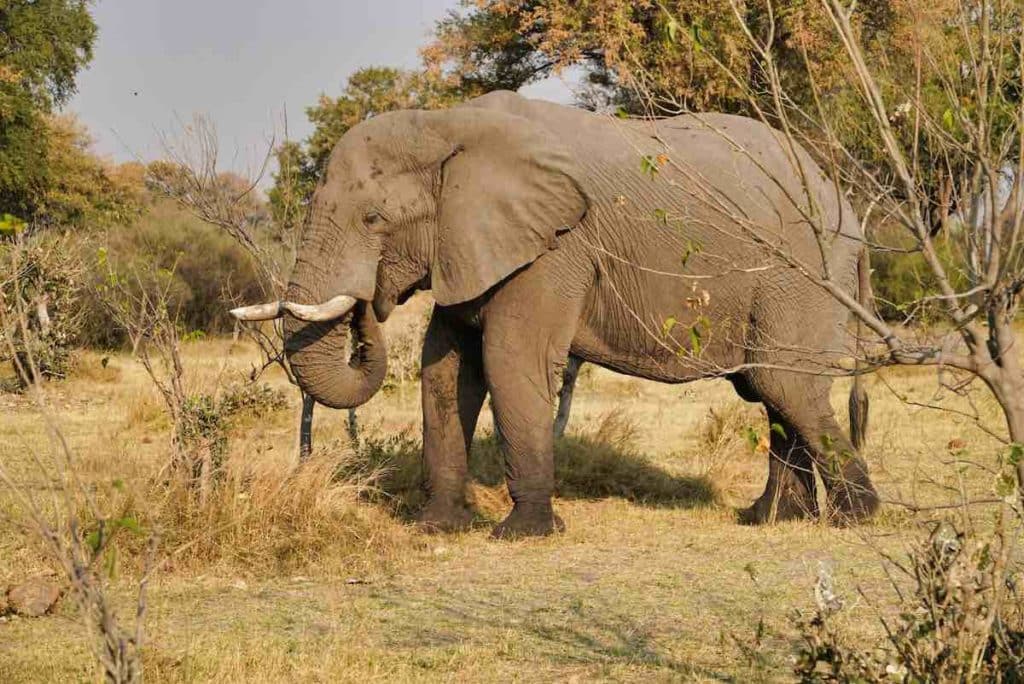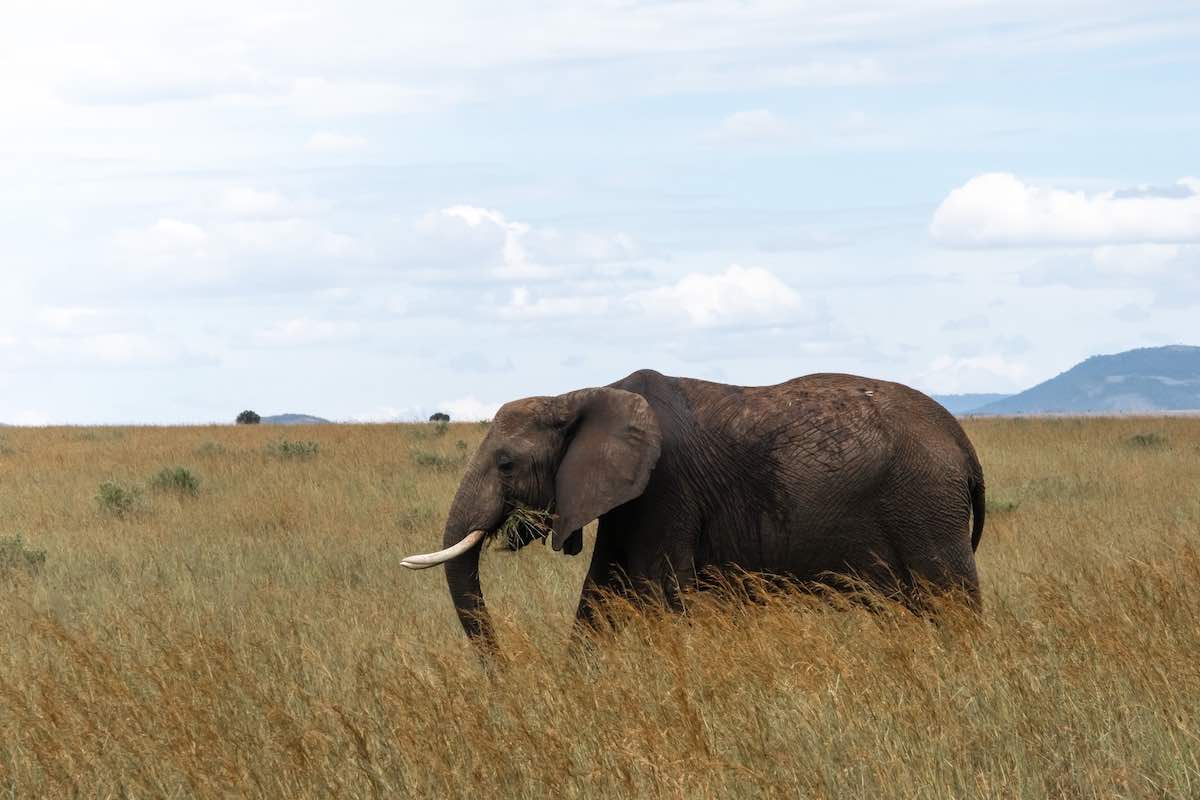The elephant is the largest known mammal to live on land. This creature’s large tusks, enormous ears, and muscular but sensitive legs make it stand out among other animals.
Even though all elephants share some similarities, every species has distinct features. But there are still some main reasons why elephants are endangered in the world today.
There are three living species of elephant: African bush elephant (also known as savannah elephant), African forest elephant and the Asian elephant. Asian elephants have smaller ears and a level back, while African elephants have larger ears and a more concave back. Meanwhile, the Asian elephant is listed as endangered by the IUCN.
In this article we’ll discusses why elephants are endangered, their natural habitats, what makes them significant to the wildlife world, the dangers they face as a species, and ways we can prevent their extinction. Read on!
Where Do Elephants Live?
Only approximately 450,000-500,000 elephants remain in the wild today, with most living on the African continent. Of the 35 countries home to elephants, the African bush elephant is the most widespread.
It’s estimated that 10 million Elephants roamed earth in 1930.
WWF
Elephants thrive in any environment where they have easy access to food and water sources, which is why you’ll find them throughout sub-Saharan Africa’s savannahs.
Asian elephants that are similar to them live in the rainforests and scrub tropical forests of Nepal, Southeast Asia, and India. They generally stay close in groups so extended families can spend time together.
Females usually hang out with other females of the same or related family and raise their children together. Typically, these communities (known as herds) do not have many males around since they tend to die younger than females. The matriarch generally is the oldest female member who leads the herd without male companionship.
The African bush elephant is found in various habitats, from lowland coastal areas to highland regions and from wet savannas to dry savannas, and deserts. Tropical woods are the primary habitat of Africa’s elephants. Still, the animal can also be found in the transitional ecotones and gallery forests that separate forested areas from open grasslands.
Asian elephant lives in different areas depending on the season. These elephants reside among scrub woods, evergreen forests, and places with thorns, like Cambodia and Vietnam.
8 Reasons Why Elephants Are Endangered
The elephant populations have decreased rapidly over the last 40-50 years. Some say with up to 50% of the population.
1. Population Continues To Decline
Although the southern African elephant population is stable and growing, the demand for ivory tusks has caused a downfall in numbers throughout central and eastern Africa.
The World Wildlife Fund believes that only 400,000 elephants remain in Africa, a drastic decrease from the estimated 10 million that allegedly existed in 1930.
2. Profitable And Precious Tusks
The ivory trade ban in 1989 was enacted to protect elephants from being killed for their tusks. This market caused some herds to lose 80 percent of their animals during the 1980s.
In 2016, China announced that all ivory sales within the country would be banned. At the time, China was the world’s biggest ivory market.
Read more:
Read the background of the 1989 international commercial trade in ivory ban at WWF
Even with the legislation, it’s difficult to know exactly how many elephants are lost each year because much of the poaching occurs in remote areas or countries that don’t have reliable data-tracking methods.
3. Continued Poaching
Because the demand for ivory products is still high, illegal trafficking and poaching of elephants have continued – even though there’s a ban on the trade of ivory.
This lucrative industry exists because people in Asia still want to buy things made from ivory, which has caused the population of African elephant to decline rapidly.
4. The Rapid Decline Of The Asian Elephant Population
The Asian elephant population has decreased by 50% in only three generations. Even now, their numbers continue to dwindle. It is estimated that only 40-50,000 wild Asian elephants remain.
Though they are not as large as African elephants, these creatures are still critically endangered due to hunting for their ivory tusks. Ivory is often used to make elaborate and expensive ornaments in e.g. China.
5. Trophy Hunting Eliminates Most Adaptable Species
The devastating effects of climate change on the animal kingdom are only being accelerated by trophy hunting, which often targets the world’s largest animals.
Several scientists have proposed that the largest animals may have the best chance of adapting to climate change due to their size and evolutionary ability.
6. Habitat Loss
The growing human populations in areas such as Africa and Asia is destroying animal habitats. Woodlands are being cleared to make space for developing communities. These city and town expansions happen on what used to be pristine land.
A large factor in the decline of elephants is the loss of their homes, especially African elephant habitat. However, there are a lot of things happening for elephant conservation.
Elephants and other similar-sized animals need a lot of room to roam, and limitations on food sources greatly impact their populations.
African elephant habitat has declined by over 50% since 1979, while Asian elephants are now restricted to just 15% of their original range. Crazy numbers!
7. Conflict And Encroachment
As the human population grows, elephant habitats in central Africa and Asia are shrinking. In some areas, the proximity between humans and elephants is high enough to cause conflict.
As elephants’ foraging areas decrease, they sometimes raid human food stores, causing economic loss, danger to humans, and negative attitudes toward these powerful animals.
8. Migratory Routes Have Changed Or Been Blocked
The growth of human settlements has completely or partially demolished elephants’ traditional migration paths in both Asia and Africa.
Disruptions to migratory routes caused by climate change frequently result in insufficient animal-feeding growth, resulting in elephants starving or dehydrating to death.

The Importance Of Elephants To Wildlife
1. Modify The Ecosystem
Elephants play a vital role in maintaining ecological balance. By trampling trees, they help clear the forest floor and make room for new growth.
This deforestation allows lower-lying plants to access more light and flourish.
2. Help Other Animals Feed
Dung beetles are unique creatures in that they lay their eggs inside the feces of other animals. The larvae hatch and consume the dung until they mature into adults. Honey badgers often eat dung beetle larvae, which helps to control their population.
3. Help Other Animals Drink Water
Not only do they help other animals find water during droughts, but they use their feet, tusks, and trunks to dig holes in dry riverbeds, which allows creatures easy access to the water that has been collected.
4. Help In The Growth Of New Plants
Because elephants travel such vast grasslands, they spread new plant life by easily distributing seeds in their feces across the landscape.
Not only does this act serve as an effective fertilizer, but it also aids in seed germination and growth.
Consequently, a healthy distribution like this would enable plants to expand their range and colonize new territories.
5. Attract Tourists
Elephant-watching is one of the most popular tourist activities in sub-Saharan Africa, and tourists from Europe and US who come to see these animals are a major source of foreign exchange income for the region.
Ways To Prevent The Extinction Of The Elephant
1. Raising Awareness
The general public does not fully understand the grave situation facing elephants.
Without significant action, their numbers will continue to decline.
John Williams of ElephantGuide
If people are made aware of the plight of elephants, they will take greater precautions to keep them safe.
2. Put An End To The Need For Ivory
The main target of poaching efforts is the ivory tusks of elephants. This issue can be stopped if more people educate themselves on the matter and take action to abolish the ivory trade. If this goal is met, adult elephants can mate successfully, increasing the population size and ensuring future generations don’t face extinction.
All countries should ban trading ivory and other elephant parts, but this is especially important in nations with large populations of elephants.
3. Encourage Community Participation
The number of wildlife scouts placed along farming borders should be increased to avoid damage done by elephants to crops.
When farmers are properly educated on how to coexist with elephants, or at least prevent their crops from being damaged, it will reduce the number of retaliatory kills against elephants.
Summary
Elephants have always been an intricate part of their ecosystems, but now they are on the brink of extinction. The depletion of their natural habitat due to deforestation and human development has infringed upon their roaming space, which inhibits them from being able to live happily.
Additionally, elephants are often killed for their ivory tusks, which are highly prized on the black market. This illegal trade in elephant parts has led to a sharp decline in elephant populations, particularly in Africa.
Furthermore, as human populations continue to grow and expand, elephants are increasingly coming into conflict with humans. This can result in elephants being killed or displaced from their natural habitats, further exacerbating the problem.
We need to take immediate action if we want elephants to stick around for future generations. Support conservation efforts, cut down on the demand for elephant products, and create policies that prevent habitat destruction and poaching.
Frequently Asked Questions – Reasons Why Elephants Are Endangered
1. Habitat loss
2. Poaching
3. Conflict with humans
A total of 9,182 elephant deaths were recorded over 26 years. The mortality rate increased with time and was most commonly caused by natural (33.1%) and human-related means, such as ivory poaching (31.5%) or conflicts between humans and elephants (19.9%).
Out of the original population of 1 million African elephants, 100 are killed daily by poachers searching for ivory, meat, and body parts. This leaves a mere 400,000 elephants remaining.
COPA has revealed that Sri Lanka is the number one country worldwide for killing elephants.
